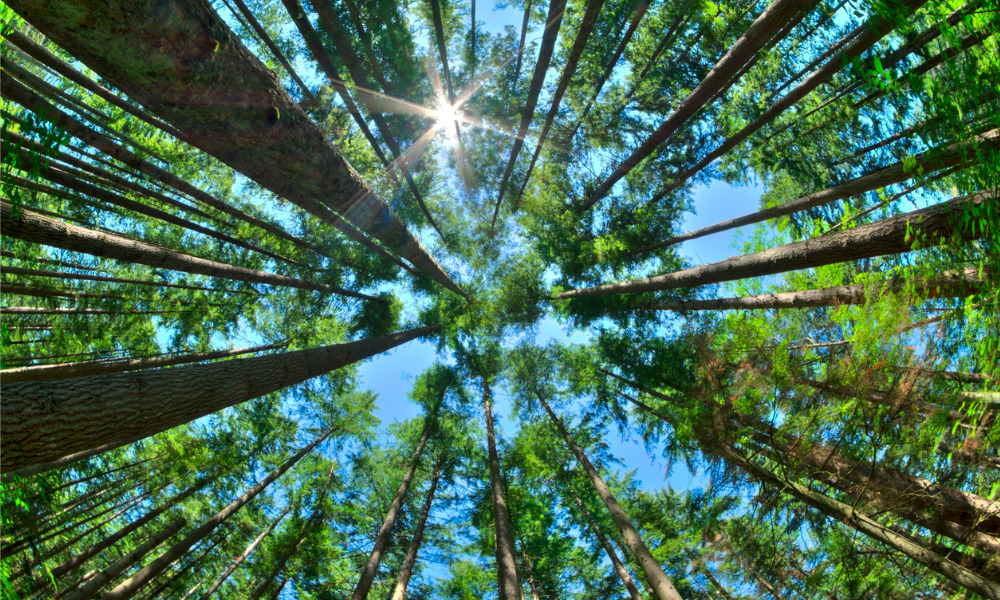Forests are intimately linked to Canada’s history and heritage as a nation. Forests are also one of the largest sources of income for Canada. And so this leads to the question:
How is the Canadian government protecting the forests?
Canada’s government (federal and provincial) has enacted laws, policies, and regulations to protect its forests. These laws include the conservation, and the utilization of forest resources.
Who regulates forestry in Canada?
Forestry laws and regulations are the responsibility of both the federal and provincial or territorial governments. However, provincial governments play a key role in conserving, utilizing and managing forest resources.
At the federal level, the implementation of forestry laws and regulations lies with Natural Resources Canada. Under it is the Canadian Forestry Service (CFS) which conducts scientific research to aid legislation and policy.
The CFS also monitors and tracks deforestation in all forestry lands, both federal or provincial/territorial.
Other agencies like the Department of National Defence, Parks Canada, Natural Resources Canada, and Aboriginal Affairs and Northern Development Canada are part of the legal framework for regulating forestry in Canada.
Which level of government is responsible for forestry in Canada?
While 94% of Canada’s total forest land is publicly owned, about 90% of this figure is under the authority of the provincial and territorial governments. This means that the bulk of enforcing forestry laws and regulations is done by the provincial and territorial governments. This includes:
- licensing of timber companies
- monitoring timber companies’ activities
- collecting royalties and other payments from timber companies
- managing designated forest protected areas
Provincial and Territorial Forestry Lands
While forestry laws and regulations may differ from one province or territory to another, there are still some commonalities.
They all strive to ensure that the state’s policy on forest utilization is in line with forest protection and conservation.
At the heart of these forestry regulations is a state-imposed requirement: Aboriginal and public interests should be considered and respected. This applies to the use and development of forestry land and its resources.
Land-use Plan
Before a forest land and its resources may be utilized (primarily referring to timber harvesting), provincial and territorial forestry laws and regulations require a land-use plan or a forest management plan. This must be approved by the concerned provincial or territorial government.
Once approved and implemented, these plans will then be monitored by the approving government. Any violation may result in fines, suspension of licences or tenures, and/or seizure of illegally harvested timber or other forest resources.
In this land-use or forest management plan, and/or in a separate plan, it is required that wildlife habitats be protected and not be disturbed.
After the forest resources are harvested, the law requires for a plan on rehabilitation or regrowing of forest to be implemented. This plan should follow the regeneration standards of the respective province or territory.
Timber Licences
The regulation of timber companies is governed by the provincial or territorial forestry laws. Here, licences and tenures (such as timber supply agreements) must first be secured according to the regulations of the respective province or territory.
The privileges granted to timber companies through their licences and tenures may vary from each province or territory. In general, they are required to follow the land-use plan or forest management plan and observe conservation measures outlined in these licences and tenures.
The volume of timber that can be harvested is governed by certain standards such as the allowable annual cuts (AAC) and the sustainable wood supply.
Federal Forest Lands
Federal-owned forest lands make up the remaining 4% out of the 94% Canadian public forest lands. This includes forest lands owned either by the Department of National Defence, the Aboriginal Peoples, the Natural Resources Canada, and Parks Canada.
Federal laws on forestry and management only apply to these forest lands.
Federal forest lands also include some of the protected areas such as boreal forests. (This holds true even if majority of boreal forests are found in provincial or territorial forest lands.)
Private Forest Lands
Finally, privately-owned forest land only accounts for 6% of the total forest land in Canada.
Forestry laws and regulations in Canada that apply to federal forest lands or to provincial forest lands may also govern private forest lands. It all depends on the nature of the transaction being carried on the said private forest land, and its location.
What are Canada’s forestry laws and regulations?
Forestry laws and regulations in Canada are made up of:
- the Forestry Act
- Timber Regulations, 1993
- Indian Act
- First Nations Land Management Act
- National Parks Act
These laws apply to federal forest lands.
The three latter laws, while about Indigenous Peoples law, also cover forestry law since most federal forest lands are designated or are reserved for the Aboriginals and the Indigenous Peoples.
The Fisheries Act and the Migratory Birds Convention Act also apply to federal forest lands as they relate to the protection of the species found on those lands.
Forestry Act, and Timber Regulations, 1993
The Forestry Act is the federal law which establishes the power of the Minister of Natural Resources to conduct research or to enter into agreements with any provincial government or any entity. The research activity is for the purpose of protecting, managing, and utilizing Canada’s forest resources (Section 3).
As such, Forest Experimental Areas may be established by the Minister in federal forest lands (Section 4).
Under the Act (Section 6), the Timber Regulations, 1993 promotes protection of the area covered by the Forest Experimental Areas. This includes:
- the protection of flora and fauna,
- removal of trespassers,
- the granting of leases and permits for timber harvesting,
- The establishment and use of reservoirs, water power sites, power transmission lines, and communication lines
The Act also provides the prescribed penalty for violators (Section 7) of the Act and the Timber Regulations, 1993. The Act also outlines the Minister’s power to seize and detain any forest resources illegally harvested, and to forfeit and dispose of the seized resources after the violator’s conviction (Section 8).
To know more about Canada’s laws on protection or conservation of forests and its implications on businesses and companies, consult with the best forestry lawyers in Canada or comment your questions down below.





